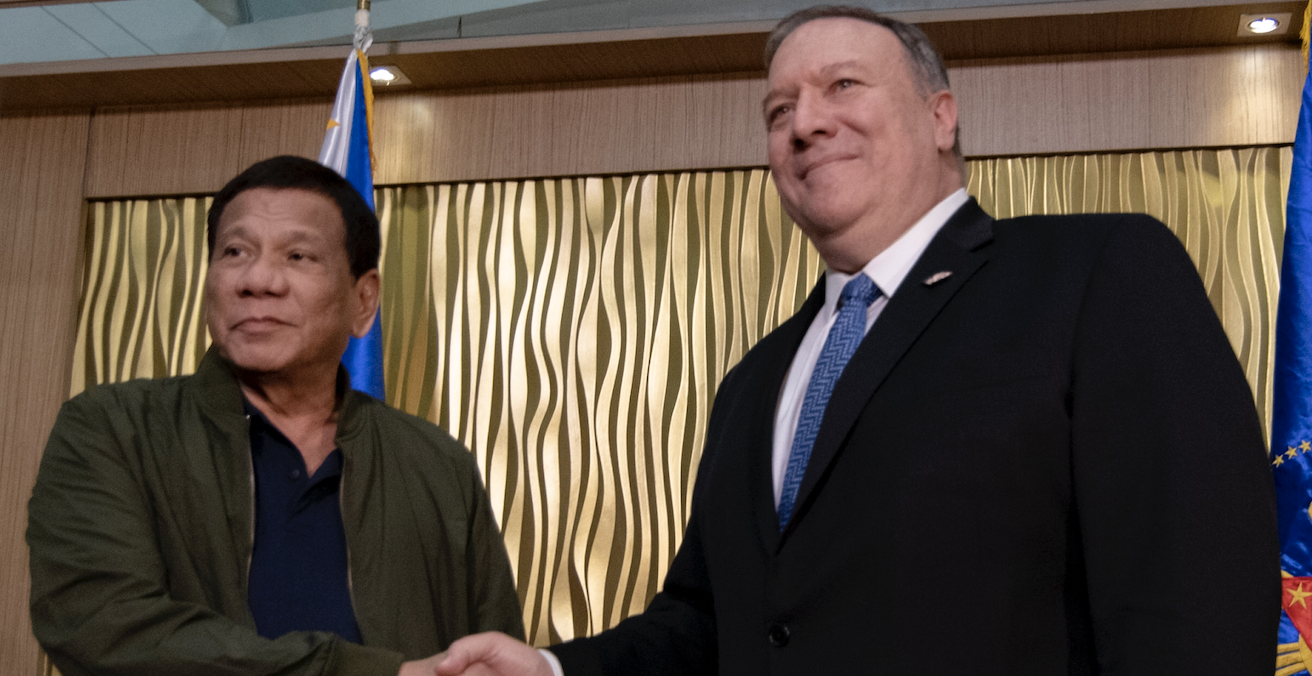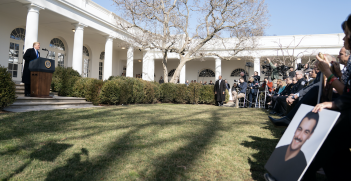The Philippines Pushback in the South China Sea

Philippine President Duterte has long held a conciliatory tone towards China’s presence in the South China Sea. But recently he has upped his rhetoric in response to the presence of Chinese vessels near an island claimed by the Philippines in the Spratly Islands.
In April, the Philippine government protested against the presence of nearly 300 Chinese vessels near Thitu Island in the disputed South China Sea. There are concerns that these vessels are part of China’s so-called “maritime militia,” which are fishing vessels that are supported by China’s Coast Guard and the People’s Liberation Army (PLA) Navy.
Referred to as Pag-Asa by the Philippines, Thitu Island is located in the Spratly Islands chain. It has been occupied by the Philippines since 1974.
The Philippines claims in the Spratly Islands conflict with those of China, Vietnam, Taiwan, Malaysia and Brunei.
The Philippines’ Department of Foreign Affairs vowed to take “appropriate action,” declaring such actions as “illegal” and “clear violations of Philippine sovereignty, sovereign rights and jurisdiction as defined under international law.”
The Philippine’s President Rodrigo Duterte was even blunter: media reports cited him threatening to send troops on a “suicide mission” if China did not “lay off” the island. He was quoted as saying “let us be friends but do not touch Pag-Asa Island or the rest. Otherwise, things would be different.” President Duterte described this not as a warning, but as a “word of advice.”
These strong statements on Thitu Island sit in contrast to the conciliatory tone Duterte has struck towards China since he became president in 2016. During his presidency, Duterte has pursued trade and infrastructure funding from China’s Belt and Road Initiative, and, consequently, has softened the rhetoric against China on South China Sea disputes. He has not, however, been completely silent: in August 2018, for example, Duterte publicly warned Beijing to “temper… its behaviour” in the South China Sea.
In the same year Duterte assumed office, an international arbitral tribunal invalidated China’s claims to “historic rights” to large swathes of the South China Sea, in a case initiated by Duterte’s successor, the Aquino government. Yet Duterte has preferred to withhold criticisms of Beijing’s ongoing assertiveness in the South China Sea that is viewed as contravening the arbitral ruling. Within the Philippines, there have been protests about the government’s failure to speak up on the South China Sea disputes, and complaints among elites that Duterte is too soft on Beijing.
While the arbitral tribunal ruling may be a moral victory, it is difficult to enforce. In terms of oil and gas, Duterte has preferred a “pragmatic” approach by pursuing joint development of energy resources with Beijing. The rationale of this approach is that an agreement that unlocks the resource would mean the Philippines accessing some oil, which is better than accessing no oil.
Duterte has also appeared mistrustful of the United States, and their commitment to invoke the Mutual Defense Treaty if conflict should break out in the South China Sea. Philippines officials have held concerns that the United States would renege on treaty obligations on the grounds that sovereignty in the South China Seas is disputed.
In December 2018, Philippines Secretary of National Defence Delfin Lorenzana threatened to examine the Mutual Defense Treaty on the grounds that the United States appeared “ambivalent” about the treaty’s relevance to the South China Sea.
The increased sightings of Beijing’s vessels around Thitu Island and Manila’s pushback come after US officials publicly assured the Philippines that if China attacked it in the South China Sea, the United States would come to their defence. At a press conference in Manila on 1 March, US Secretary of State Mike Pompeo said: “[a]ny armed attack on Philippines forces, aircraft, or public vessels in the South China Sea will trigger mutual defence obligations under article 4 of our Mutual Defense Treaty.”
This was widely interpreted as clarifying Washington’s previously ambiguous position on whether a clash in the South Chain Sea would constitute an assault on the Philippines. However, reactions in Manila to the US clarification of its obligations under the Mutual Defence Treaty were mixed.
For its part, the US appears to be stepping up its confrontational stance against China in the South China Sea, both in rhetoric and operation.
In October 2018, the US Vice-President Mike Pence’s defining speech to the Hudson Institute, a Washington-based think tank, in which he declared a new era of competition over cooperation, pointedly called out Beijing’s “reckless harassment” of the United States in the South China Sea.
The Trump administration has also been conducting Freedom of Navigation Operations (FONOP) more regularly in the South China Seas. In February 2019, the US Navy conducted the Trump Administration’s tenth known FONOP within 12 nautical miles of Mischief Reef in the Spratly Islands. Yet, this increasingly confrontational stance has led to concerns in Southeast Asia that the risk of conflict between China and the United States is increasing, particularly as ASEAN attempts to establish a Code of Conduct with China on the South China Sea.
Dr Rebecca Strating is a lecturer in Politics in the Department of Politics and Philosophy at La Trobe University. She researches Australian politics and foreign policy, small states and maritime disputes in Asia-Pacific.
This article is published under a Creative Commons License and may be republished with attribution.





